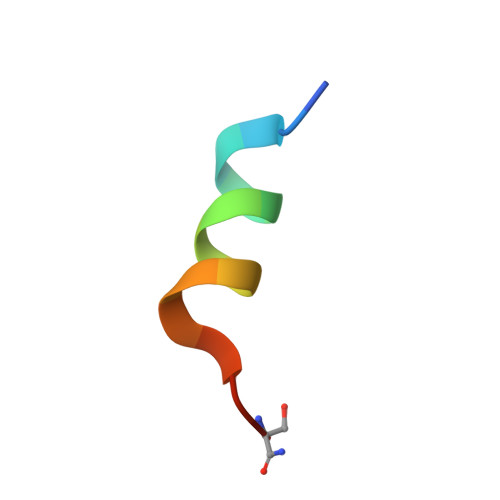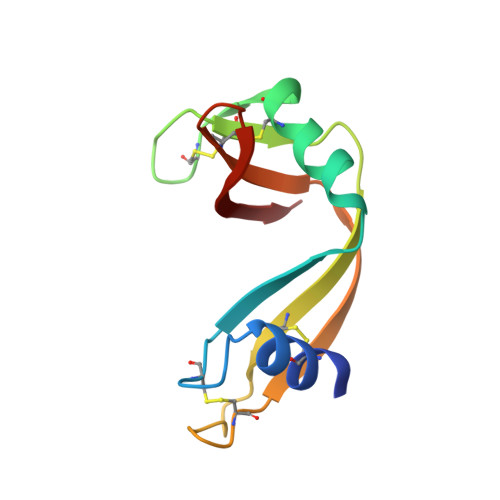Osmolytes stabilize ribonuclease S by stabilizing its fragments S protein and S peptide to compact folding-competent states.
Ratnaparkhi, G.S., Varadarajan, R.(2001) J Biol Chem 276: 28789-28798
- PubMed: 11373282
- DOI: https://doi.org/10.1074/jbc.M101906200
- Primary Citation of Related Structures:
1J7Z, 1J80, 1J81, 1J82 - PubMed Abstract:
Osmolytes stabilize proteins to thermal and chemical denaturation. We have studied the effects of the osmolytes sarcosine, betaine, trimethylamine-N-oxide, and taurine on the structure and stability of the protein.peptide complex RNase S using x-ray crystallography and titration calorimetry, respectively. The largest degree of stabilization is achieved with 6 m sarcosine, which increases the denaturation temperatures of RNase S and S pro by 24.6 and 17.4 degrees C, respectively, at pH 5 and protects both proteins against tryptic cleavage. Four crystal structures of RNase S in the presence of different osmolytes do not offer any evidence for osmolyte binding to the folded state of the protein or any perturbation in the water structure surrounding the protein. The degree of stabilization in 6 m sarcosine increases with temperature, ranging from -0.52 kcal mol(-1) at 20 degrees C to -5.4 kcal mol(-1) at 60 degrees C. The data support the thesis that osmolytes that stabilize proteins, do so by perturbing unfolded states, which change conformation to a compact, folding competent state in the presence of osmolyte. The increased stabilization thus results from a decrease in conformational entropy of the unfolded state.
Organizational Affiliation:
National Center for Biological Sciences, Bangalore 560 065, India.
















